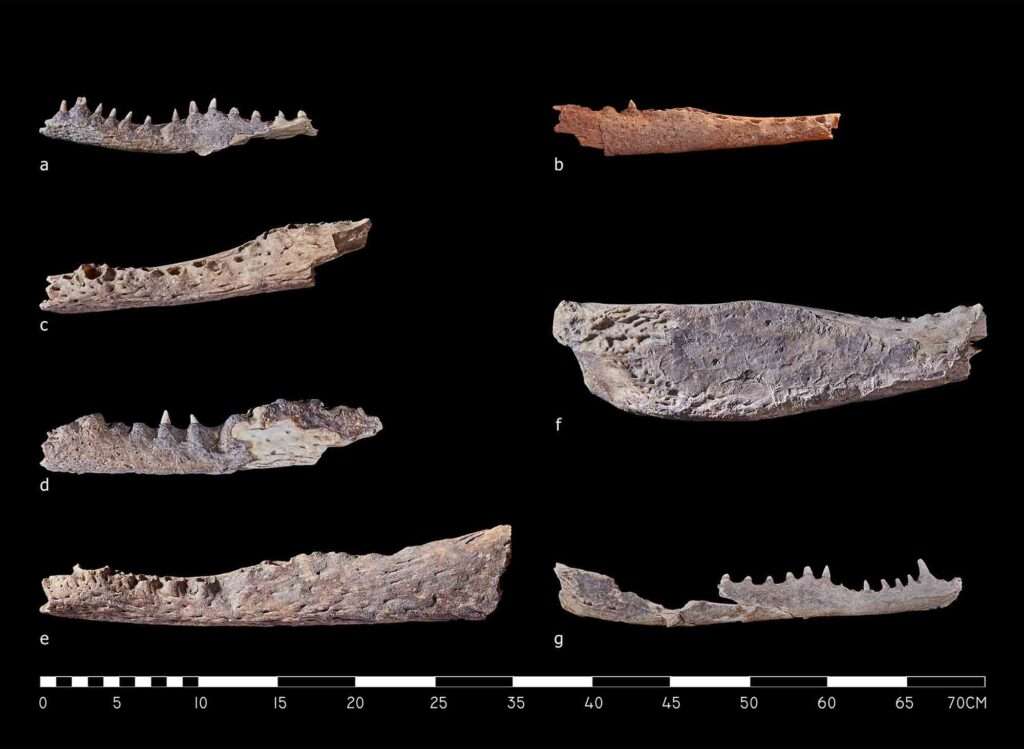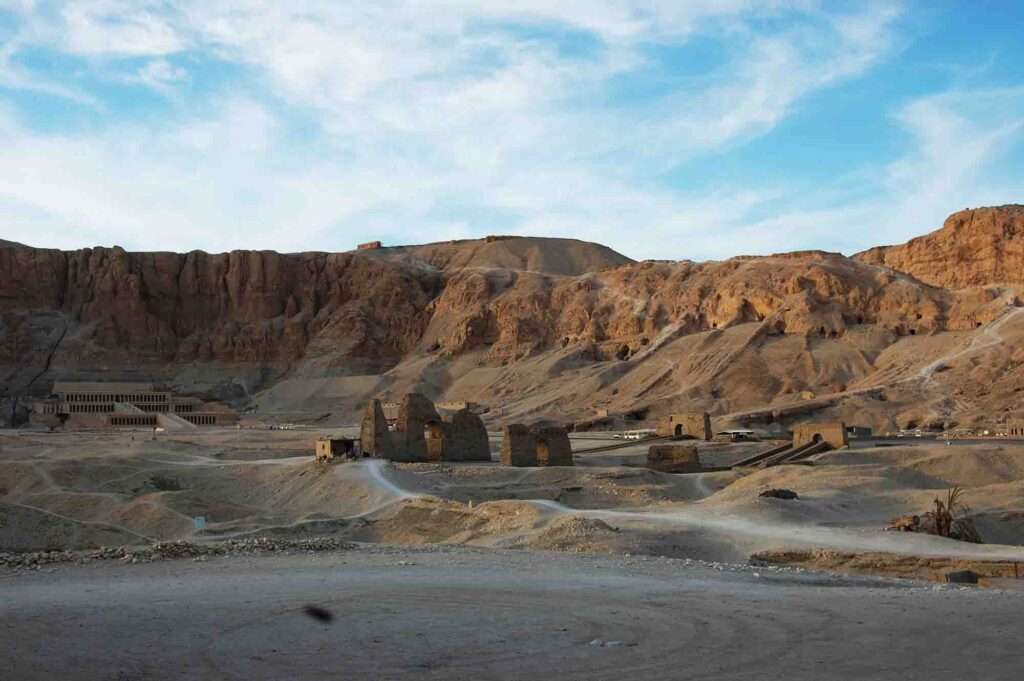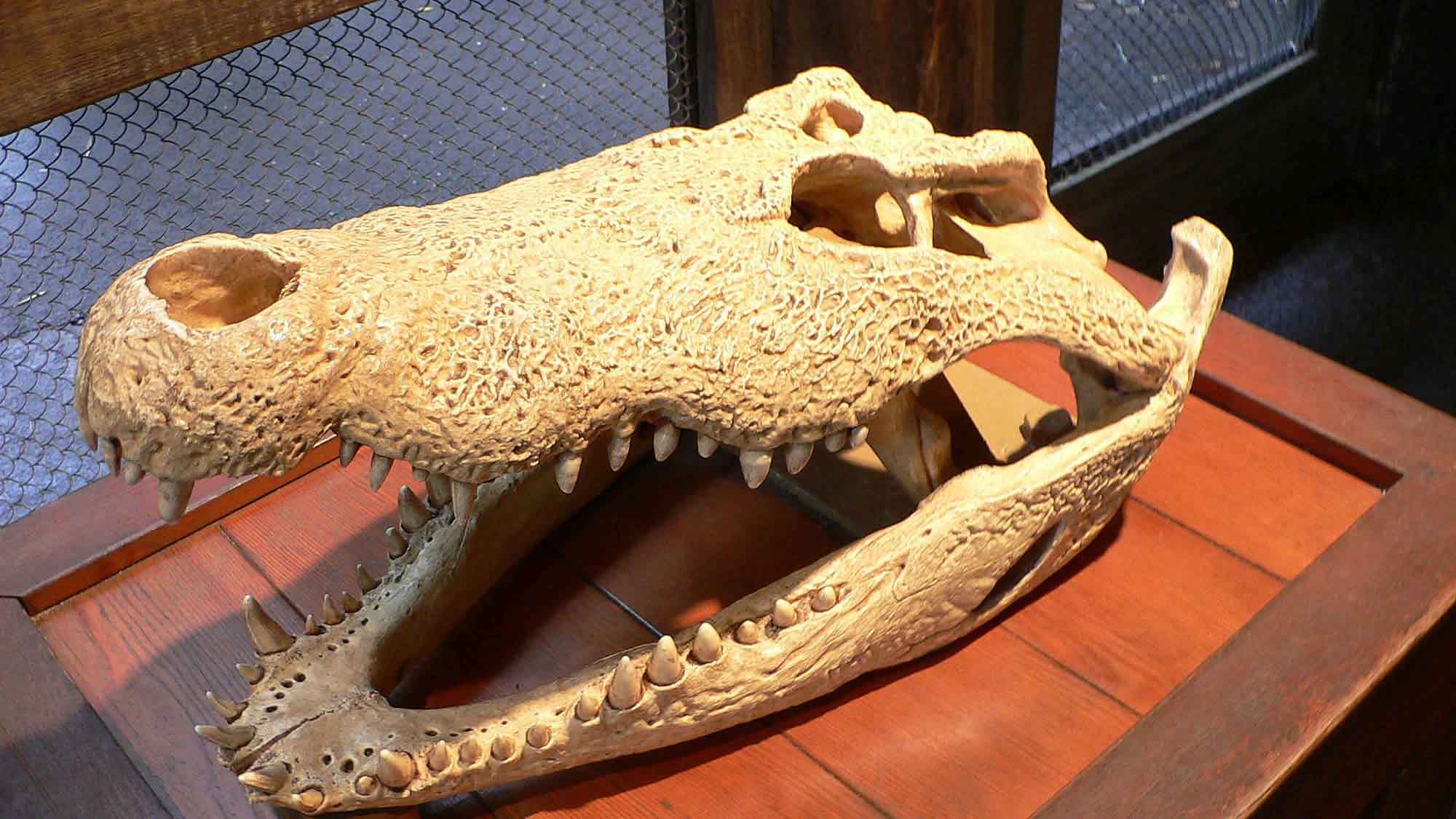Archaeologists have unearthed nine crocodile heads placed inside two ancient noblemen’s tombs in an Egyptian necropolis.
The scientists from the University of Warsaw, Poland, reportedly discovered the crocodile heads in the tombs of two high-ranking officials who served at the court of King Mentuhotep II from the Eleventh Dynasty.
All the reptile heads were reportedly found at the Theban Necropolis, known also as El-Asassif, near the Mortuary Temple of Hatshepsut by the archaeologists from Warsaw during a dig.
Located on the west bank of the Nile in Upper Egypt, the necropolis was predominantly used for ritual burials during the Pharaonic period.
The university said in a statement obtained by Newsflash: “A total of nine reptile heads, whose body length ranged from two to four metres (6.5 to 13 feet), were deposited in the burial chambers.

“Thus, there were young specimens among them, as well as mature ones, undoubtedly difficult to hunt.”
Further research led by researchers Dr Patryk Chudzik and Dr Urszula Iwaszczuk indicated that the crocodile heads – with remains of the animals’ skulls, teeth and osteoderms – were not mummified but only wrapped in cloth.
So-called sacred crocodiles were considered the representation of the god Sobek and were deposited mummified in specially pre-made catacombs.
Sobek, who was represented either as a crocodile or a human with a crocodile head, was associated with strength, agility, pharaonic power and military prowess.
Dr Chudzik said: “We cannot exclude the possibility that the crocodile heads were nevertheless of exceptional importance and indicative of the exceptional position of the deceased, as we do not know of such finds from tombs belonging to people from lower social classes.
“In both our cases, we know that the owners of the tombs were the most important officials at the royal court.
“I can also tell you that during the past season, a few weeks ago, we found the remains of crocodile mandibles in another tomb, now in this third one.
“It too, belonged to an important official, so we can already slowly speak of a phenomenon that was hitherto completely unknown.”
Dr Chudzik added that ancient descriptions found in pyramid chambers indicated that the heads were offerings to people buried in the tombs and were aimed to empower them in the afterlife.
The university said: “In Egyptian mythology, the crocodile was identified with the god Sobek, and this was often combined with the solar god Ra determining the cycle of day and night.

“It was probably in the company of the merged Sobek-Ra form that the soul of the deceased travelled through the afterlife.”
Dr Chudzik said: “The discovery of these remains opens up an extremely interesting discussion on the significance of animal remains discovered in ancient Egyptian tombs.
“As it turns out, they were not mere sacrifices, but had symbolic significance, in the case of the crocodiles it was most likely a reference to the god Sobek-Ra.”
The study was published in the biannual peer-reviewed academic Journal of African Archaeology.
To find out more about the author, editor or agency that supplied this story – please click below.
Story By: Georgina Jadikovska, Sub-Editor: William McGee, Agency: Newsflash
The Ananova page is created by and dedicated to professional, independent freelance journalists. It is a place for us to showcase our work. When our news is sold to our media partners, we will include the link here.




